|
|
Hawker
Hawker Aircraft Limited was a British aircraft manufacturer responsible for some of the most famous products in British aviation history.
Hawker had its roots in the aftermath of the First World War, which resulted in the bankruptcy of the Sopwith Aviation Company. Sopwith test pilot Harry Hawker and three others, including Thomas Sopwith, bought the assets of Sopwith and formed H.G. Hawker Engineering in 1920.
In 1933 the company was renamed Hawker Aircraft Limited, and it took advantage of the Great Depression and a strong financial position to purchase the Gloster Aircraft Company in 1934. The next year it merged with the engine and automotive company Armstrong Siddeley and its subsidiary, Armstrong Whitworth Aircraft, to form Hawker Siddeley Aircraft. This group also encompassed A. V. Roe and Company (Avro).
Hawker Aircraft continued to produce designs under its own name as part of Hawker Siddeley Aircraft, from 1955 a division of Hawker Siddeley Group. The "Hawker" brand name was dropped, along with those of the sister companies, in 1963; the Hawker P.1127 was the last aircraft to carry the brand.
The Hawker legacy was maintained by the American company Raytheon who produced business jets (including some derived from the 125, whose original design dated back to de Havilland days) under the "Hawker" name. This was the result of purchasing British Aerospace's product line in 1993. The name was also used by Hawker Beechcraft after Raytheon's business jet interests (Hawker and Beechcraft) were acquired by investors and merged.
Hurricane | Tempest |
Hunter
Hawker Hurricane
The Hawker Hurricane is a single-seat fighter aircraft of the 1930s–40s that was designed and predominantly built by Hawker Aircraft Ltd. for service with the Royal Air Force (RAF). It was overshadowed in the public consciousness by the Supermarine Spitfire's role during Battle of Britain in 1940, but the Hurricane inflicted 60 percent of the losses sustained by the Luftwaffe in the engagement, and fought in all the major theatres of the Second World War.
The Hurricane originated from discussions between RAF officials and aircraft designer Sir Sydney Camm about a proposed monoplane derivative of the Hawker Fury biplane in the early 1930s. Despite an institutional preference for biplanes and lack of interest from the Air Ministry, Hawker refinied their monoplane proposal, incorporating several innovations which became critical to wartime fighter aircraft, including retractable landing gear and the more powerful Rolls-Royce Merlin engine. The Air Ministry ordered Hawker's Interceptor Monoplane in late 1934, and the prototype Hurricane K5083 performed its maiden flight on 6 November 1935.
In June 1936, the Hurricane went into production for the Air Ministry; it entered squadron service on 25 December 1937. Its manufacture and maintenance was eased by using conventional construction methods so that squadrons could perform many major repairs without external support. The Hurricane was rapidly procured prior to the outbreak of the Second World War in September 1939, when the RAF had 18 Hurricane-equipped squadrons in service. The aircraft was relied on to defend against German aircraft operated by the Luftwaffe, including dogfighting with Messerschmitt Bf 109s in multiple theatres of action.
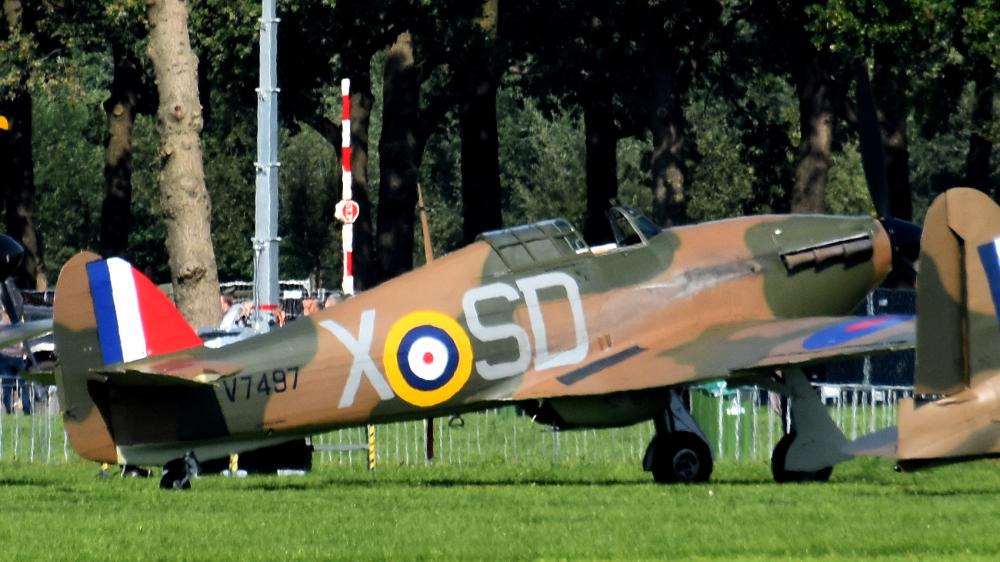

Hawker Hurricane Mk.1, registration G-HRLI, built 1940, serial number 41H-136172
Ede, Netherlands, 23 August 2019
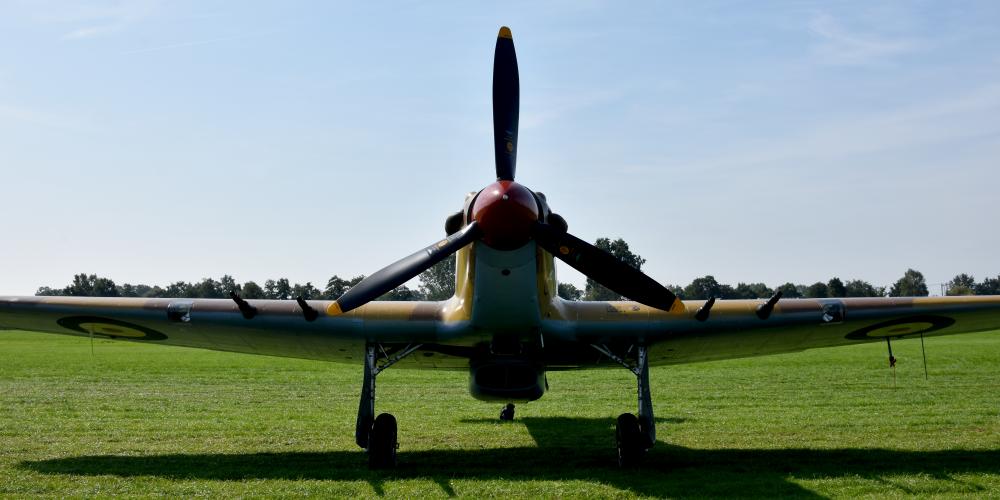
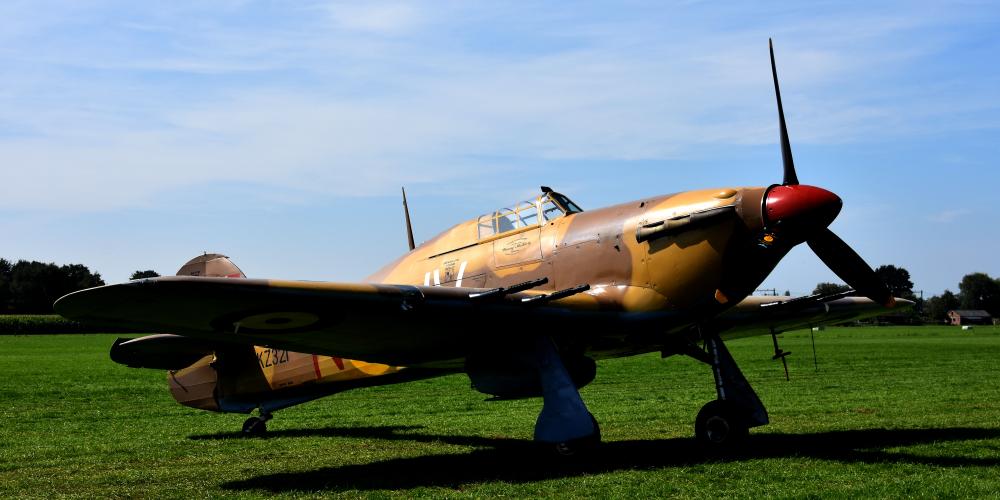
Hawker Hurricane Mk.IV, registration OO-HUR, built 1944, serial number KZ321
Ede, Netherlands, 23 August 2019
Hurricane | Tempest |
Hunter
Hawker Tempest
The Hawker Tempest is a British fighter aircraft primarily used by the Royal Air Force (RAF) in the Second World War. The Tempest, originally known as the Typhoon II, was an improved derivative of the Hawker Typhoon, intended to address the Typhoon's unexpected fall-off of performance at high altitude by replacing its wing with a thinner laminar flow design. Having diverged considerably from the Typhoon, it was chosen to rename the aircraft Tempest. The Tempest emerged as one of the most powerful fighters of World War II and was the fastest single-engine propeller-driven aircraft of the war at low altitude.
Upon entering service in 1944, the Tempest was used as a low-level interceptor, particularly against the V-1 flying bomb threat, and as a ground attack platform, in which it supported major events such as Operation Market Garden. Later, it successfully targeted the rail infrastructure in Germany and Luftwaffe aircraft on the ground, as well as countering such attacks by German fighters. The Tempest was effective in the low-level interception role, including against newly developed jet-propelled aircraft such as the Messerschmitt Me 262. The further developed Tempest Mk.II, which had several improvements including being tropicalised and was intended to see combat against Japan in South-East Asia as part of the Commonwealth Tiger Force, did not enter service until after the end of hostilities.

Hawker Tempest Mk.II, registration HA623, built 1945, serial number ????
Indian Air Force Museum, Delhi, India, 28 April 2018
Hurricane | Tempest |
Hunter
Hawker Hunter
The Hawker Hunter is a transonic British jet-powered fighter aircraft that was developed by Hawker Aircraft for the Royal Air Force (RAF) during the late 1940s and early 1950s. It was designed to take advantage of the newly developed Rolls-Royce Avon turbojet engine and the swept wing, and was the first jet-powered aircraft produced by Hawker to be procured by the RAF. On 7 September 1953, the modified first prototype broke the world air speed record for aircraft, achieving a speed of 727.63 mph (1,171.01 km/h; 632.29 kn). The single-seat Hunter was introduced to service in 1954 as a manoeuvrable day interceptor aircraft.
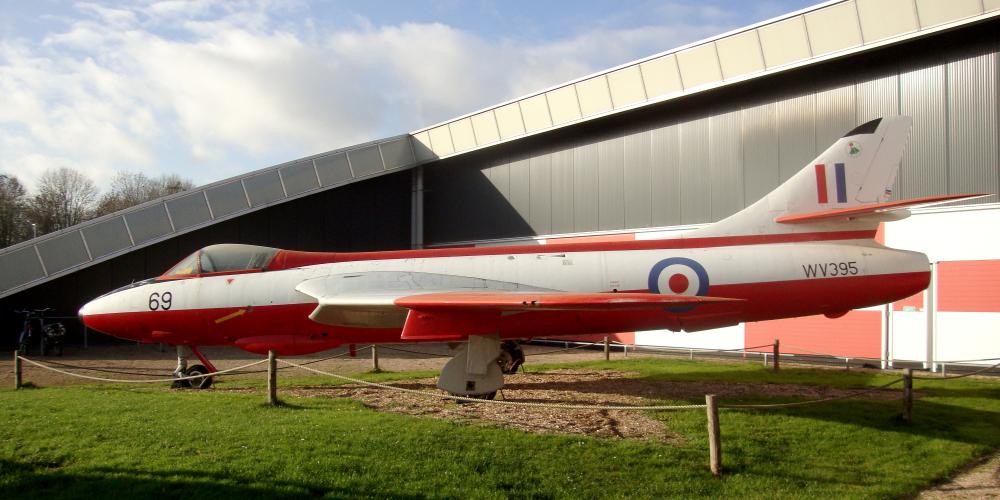
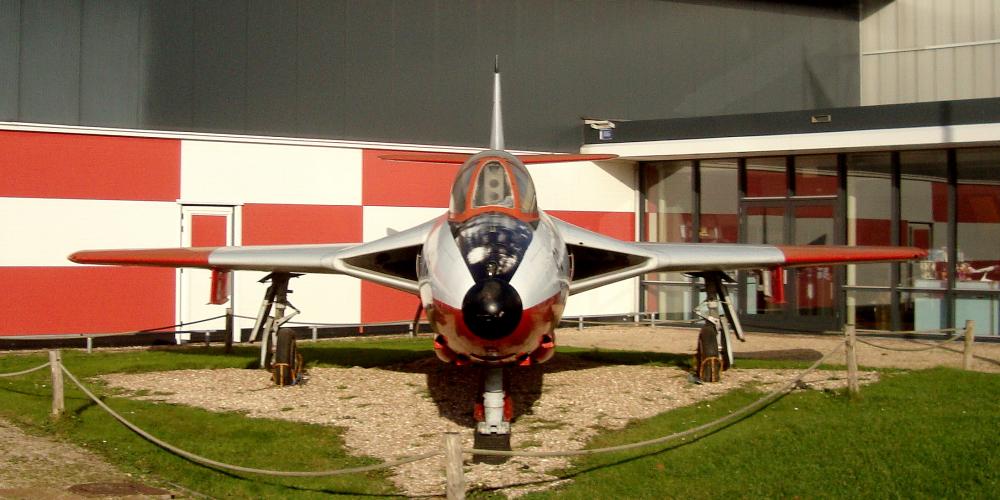
Hawker Hunter Mk 51, registration WV395, built 1956, serial number 41H/680269
Aviodrome, Lelystad, Netherlands, 30 November 2018
(original E-410 (Mk 51) with tail from WV395 (F.4))
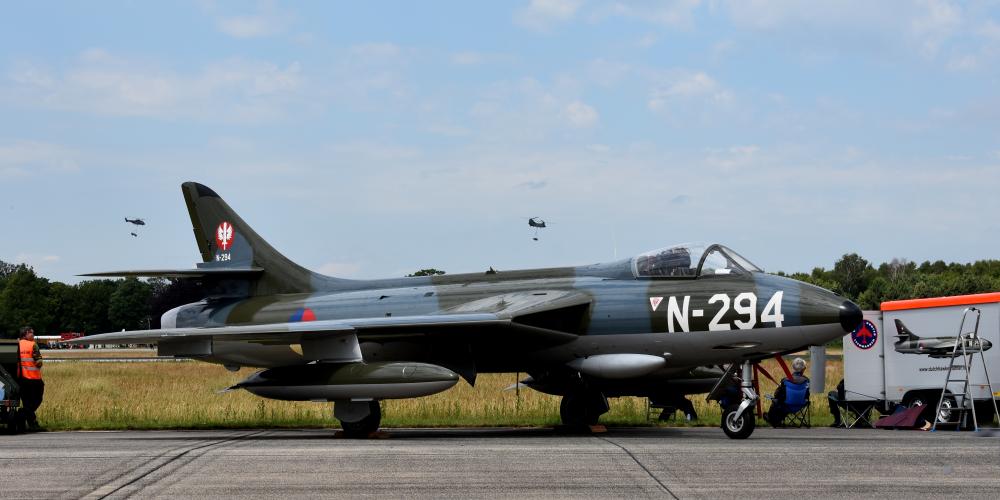
Hawker Hunter F.6A, registration N-294, built 1956, serial number 2453
Vliegbasis Volkel (UDE/EHVK), Uden, Netherlands, 14 June 2019
Hurricane | Tempest |
Hunter
|







